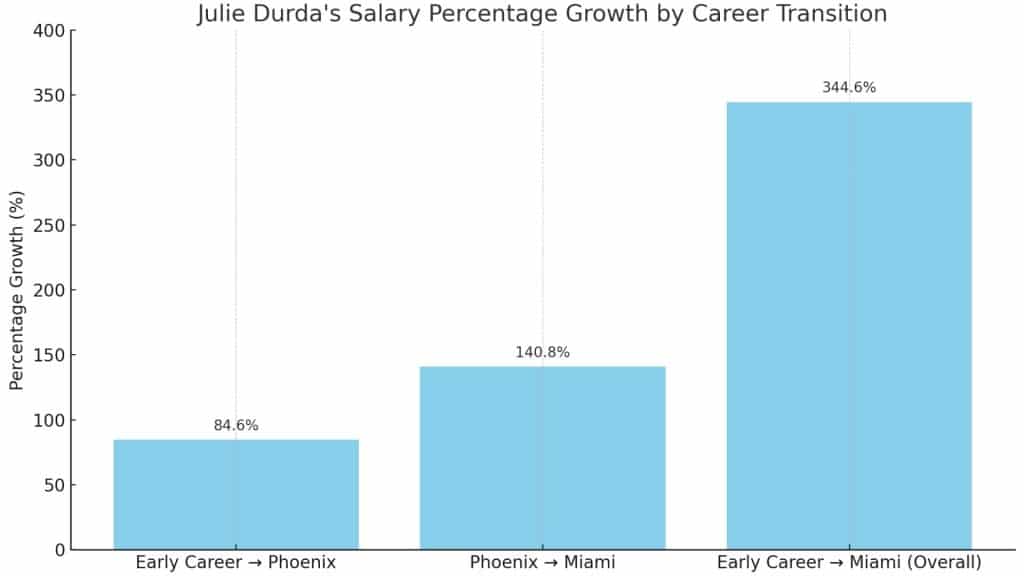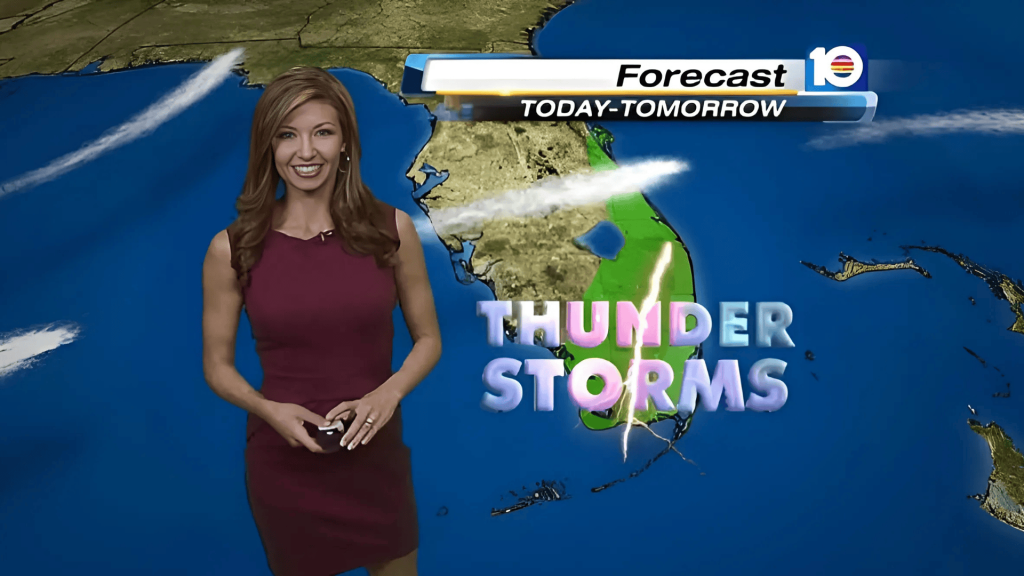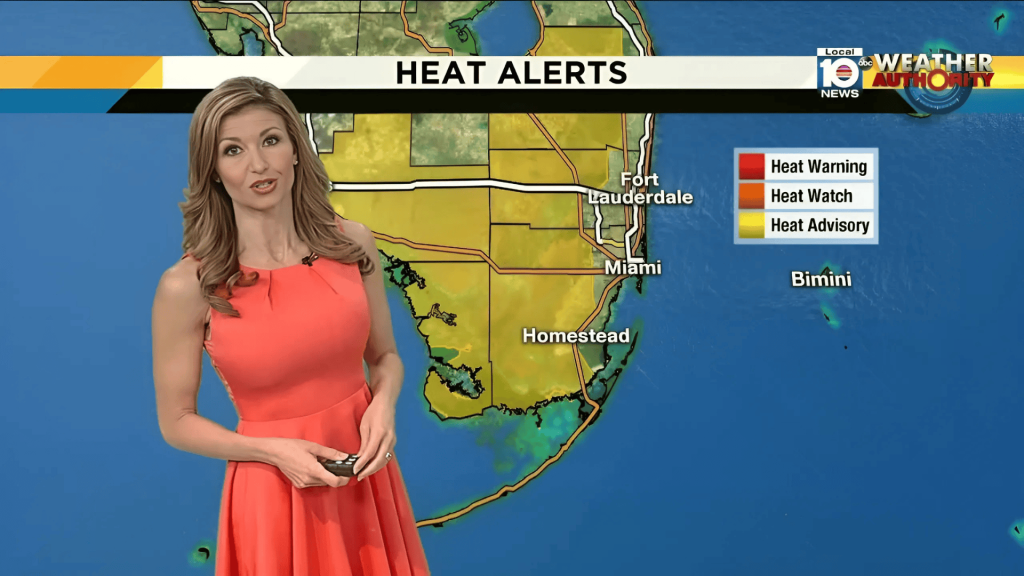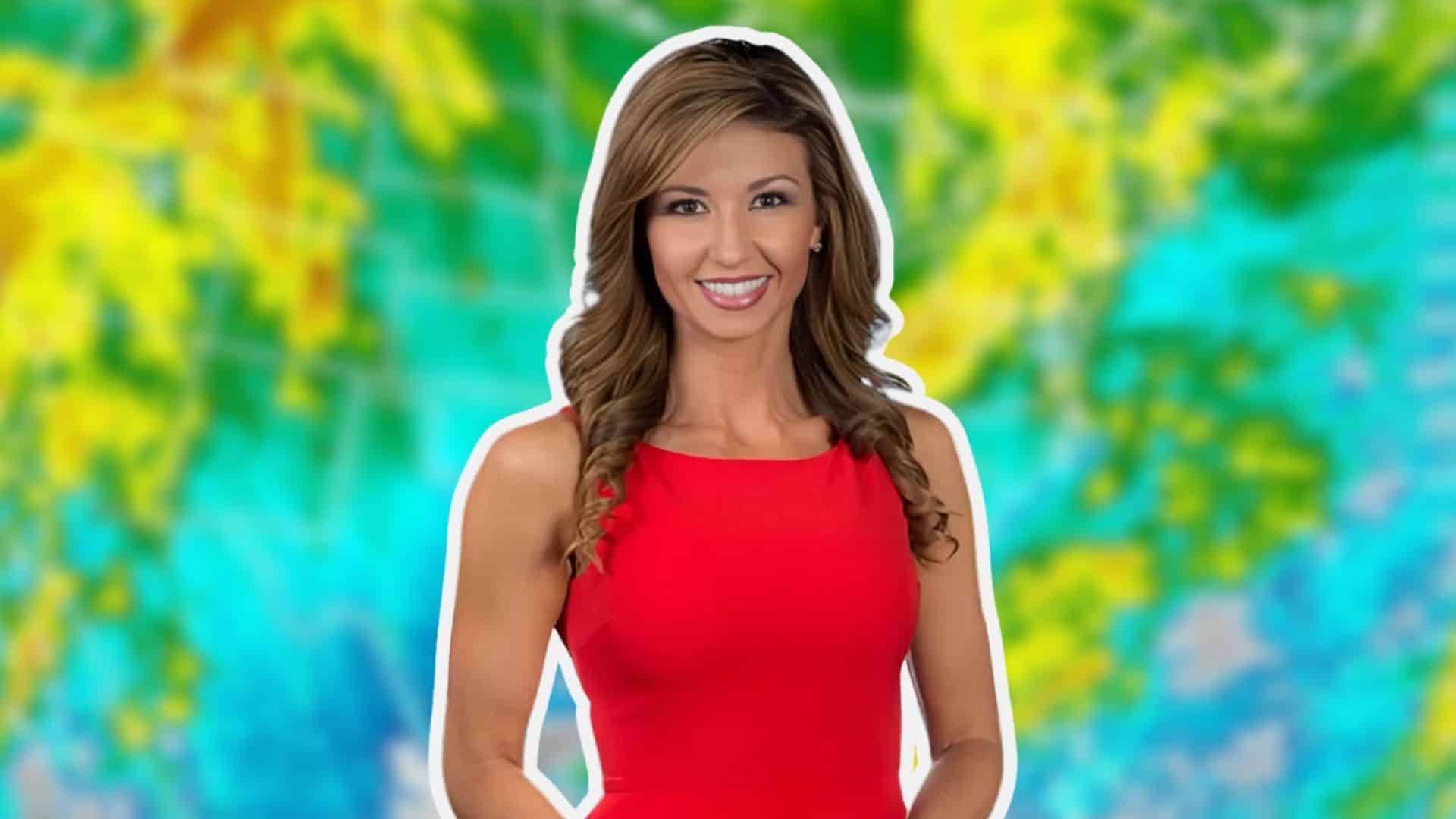Julie Durda is a prominent American meteorologist currently working as the weather anchor for WPLG Local 10 in Miami, Florida.
With over two decades in broadcast meteorology, she has built a strong, respected career.
Known as “South Florida’s number one morning meteorologist,” her salary has naturally drawn public attention.
Since then, she has built a thriving career across several major media markets.
Her compensation reflects her expertise in tropical weather forecasting and her prominence in one of the nation’s largest television markets.
Julie Durda’s Current Salary: Breaking Down the Numbers
Durda, working as an on-air broadcast meteorologist for WPLG Channel 10 news, earns an annual salary ranging from $85,000 to $95,000.
However, other sources suggest higher figures, with Julie’s average salary around $73,089 as of 2023.
The wide range reflects the use of different reporting methods and potential bonuses.
Durda earns an annual salary ranging from $45,000 to $110,500, according to some estimates.
Her compensation likely includes a base salary along with performance-based incentives linked to ratings and special coverage during hurricane season.
This added value reflects her importance to South Florida viewers during critical weather events.
Contract Structure and Benefits
Major market meteorologists receive packages including health benefits, vacation time, and equipment allowances.
Julie’s morning meteorologist role commands premium compensation due to early hours and high viewership.
Television contracts typically include performance bonuses, overtime pay for severe weather coverage, and funding for professional development.
Her hurricane expertise includes hazard pay during storm seasons, reflecting the demanding nature of South Florida broadcasting.
Salary Evolution Throughout Her Career
Julie’s earnings have grown significantly since her early career beginnings.
She started her career as a traffic reporter for Sacramento’s KXTV channel while still a student.
Here’s an overview of Julie Durada’s salary evolution:
| CAREER STAGE | POSITION | ESTIMATED SALARY RANGE | YEARS ACTIVE |
|---|---|---|---|
| Early Career | Traffic Reporter (KXTV) | $25,000 – $40,000 | Early 2000s |
| Market Advancement | Traffic & Weather Anchor (KPHO) | $50,000 – $70,000 | Mid 2000s |
| Major Market Break | Morning Meteorologist (WPLG-Local 10) | $91,000 – $198,000 | 2012 – Present |
The significant jump came with her Miami market entry, where major market meteorologists command substantially higher salaries.
Her career progression shows steady growth aligned with market size and responsibility increases.
Key Milestones
Her move from traffic reporting to full-time meteorology marked a significant salary jump.
Meteorologists often earn 30% to 50% more than traffic reporters in the same market.
Moving from Sacramento to Phoenix represented another significant pay increase, followed by her biggest leap entering the Miami market.
Her achievement as “Best Meteorologist in South Florida” in 2011 likely triggered substantial salary negotiations and contract improvements.
Percentage Growth Over Time

Julie’s salary nearly doubled (84.6% increase) moving from Sacramento to Phoenix.
Her salary more than doubled again (140.8% increase) from Phoenix to Miami.
Overall, her salary grew by 344.6% from her early career to her current role in Miami.
Her total career earnings growth of 400–500% far exceeds the industry’s average.
This remarkable increase highlights her strategic market transitions and specialized expertise in hurricane forecasting.
Salary Breakdown by Income Streams

Julie’s primary income comes from her WPLG meteorologist position, but she likely has additional revenue streams.
She actively supports causes like the Boys and Girls Club, Breast Cancer Prevention, and Joe DiMaggio Children’s Hospital.
Her involvement in these events may also include appearance fees, reflecting her public appeal and commitment to giving back.
Many television meteorologists supplement their income through weather consulting, speaking engagements, and social media partnerships.
She has 16.2k Twitter, 7.6k Instagram, and 4.9k Facebook followers, creating potential for sponsored content.
Her expertise in hurricane forecasting may generate consulting opportunities during peak storm seasons.
Secondary Revenue Sources
Television personalities often earn extra income through public appearances and speaking engagements, especially valuable in hurricane-prone South Florida.
Julie’s social media presence with thousands of followers creates opportunities for sponsored content and brand partnerships.
Her charitable involvement with organizations like Joe DiMaggio Children’s Hospital may generate appearance fees.
Weather consulting during peak storm seasons provides another potential revenue stream for experienced meteorologists.
Julie Durda’s Most Lucrative Projects

Julie was recognized as “South Florida’s #1-morning meteorologist” and voted “Best Meteorologist in South Florida” in 2011.
Such accolades often pave the way for salary negotiations and substantial pay increases.
Hurricane season’s peak earnings for South Florida meteorologists, with extended coverage and breaking news leading to overtime pay and bonuses.
Her morning show captures commuters, making her segment vital for ratings.
Julie has spent the last five years honing her expertise in the tropical climate and the Atlantic Hurricane season.
This specialized knowledge commands premium compensation in the Miami market, where accurate hurricane coverage is vital.
High-Value Assignments
Major hurricane coverage and severe weather events usually offer extra compensation via overtime and hazard pay in broadcaster contracts.
Julie’s expertise in Atlantic Hurricane seasons makes her invaluable during peak storm periods when stations require extended coverage.
Breaking weather alerts, emergency broadcasts, and weekend storm tracking often trigger premium pay rates.
Her morning show anchoring during severe weather events commands higher compensation due to increased viewership and advertising revenue.
Contract Details and Negotiation Highlights
Julie joined the station in October 2012 and has held her position for over a decade, indicating successful contract renewals.
Television meteorologist contracts typically run 2-3 years with options for renewal.
Her long tenure at WPLG suggests strong job satisfaction and favorable employment terms.
She previously left WSVN in 2012 after a management disagreement, highlighting her readiness to negotiate for better opportunities.
Major market meteorologists typically have agents or attorneys negotiate contracts, concentrating on salary increases, leave provisions, and non-compete clauses.
Her specialized hurricane expertise likely strengthens her negotiating position in the Miami market.
Professional Representation
Television personalities collaborate with agents to secure favorable contracts, including salary increases and performance bonuses linked to ratings.
These representatives negotiate non-compete agreements, vacation time, and professional development opportunities.
Agents often secure market adjustment clauses that ensure salaries remain competitive with industry standards.
Meteorologists like Julie gain power from expertise, especially in hurricane-prone markets where accurate forecasting boosts loyalty and revenue.
Taxation and Take-Home Earnings

Based on her estimated salary range of $85,000 to $300,000, Julie’s after-tax income varies significantly.
Florida’s lack of state income tax provides a substantial advantage, saving approximately 5-7% compared to states with income taxes.
Her assets include a mansion in Silver Shores, Miramar, Florida, valued at $330,000, suggesting comfortable financial management.
At the lower salary estimate of $95,000, her take-home pay would be approximately $70,000 to $75,000 annually.
At estimates of $270,000 to $300,000, take-home pay may reach $190,000 to $220,000 after federal taxes.
She and her husband, David, enjoy traveling and parenting their son, Dillon, and reflecting their income for family activities.
Financial Advantages
Working in Florida offers tax advantages, as there is no state income tax.
While Miami’s living costs are high, they are balanced by the salary premium meteorologists earn in this major, hurricane-sensitive market.
No state income tax saves Julie thousands annually compared to other major markets.
Her Miramar home purchase demonstrates smart real estate investment in appreciating South Florida markets.
The year-round weather coverage demands create job security and consistent income streams, unlike seasonal markets elsewhere.
The Bottom Line
Julie Durda’s salary is estimated within a broad range, reflecting her experience, the major market she serves, and her expertise in tropical weather forecasting.
Her financial growth from small-market traffic reporter to major-market chief meteorologist demonstrates the earning potential in broadcast meteorology.
With a staggering net worth, her success goes beyond salary.
It reflects innovative financial management and strategic career decisions that have amplified her long-term wealth.
Her earnings position her among the top-paid meteorologists in major television markets.
This is especially significant in South Florida, where hurricane vulnerability makes accurate weather forecasting a vital public service.





